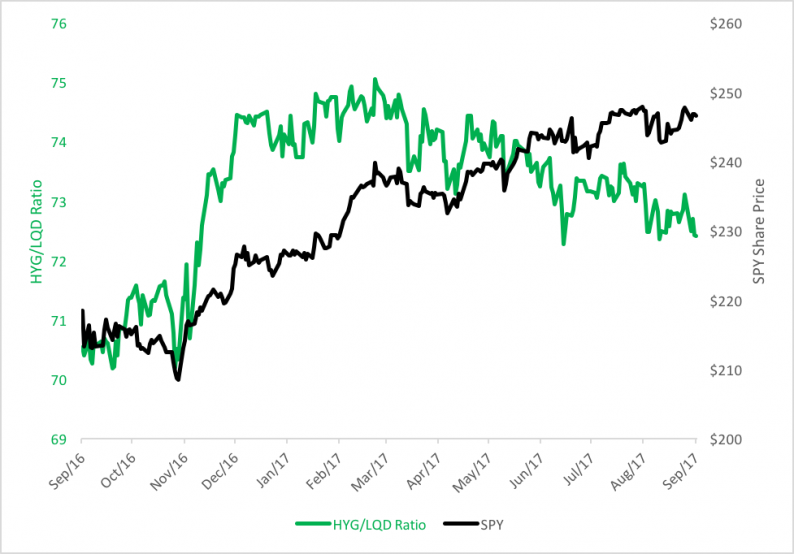Been to a doctor lately? Did your doc order a slate of tests to diagnose your condition? Physicians aren’t the only ones concerned with analytic assays.
Economists, for example, have been fretting over the so-called “Trump Bump” that developed last November: Is it a permanent condition or merely a temporary lesion that will resolve itself in short order?
Luckily, the exchange-traded fund market provides some diagnostic tools that we can use to assess generalized stock strength. Case in point: Investors’ appetite for stock risk can be metered—oddly enough—by a ratio of two fixed-income ETFs.
The iShares iBoxx $ High Yield Corporate Bond ETF (NYSE Arca: HYG) tracks a market-weighted index of U.S. junk paper with an average weighted duration of about four years. At the other end of the nominal risk spectrum is the iShares iBoxx $ Investment Grade Corporate Bond ETF (NYSE Arca: LQD) which is composed of higher-rated notes with longer average maturities and duration. Normally, a ratio of the two ETFs’ prices—HYG’s divided by LQD’s—tracks the trajectory of the broad stock market proxied by the SPDR S&P 500 ETF (NYSE Arca: SPY).
You can see the Trump Bump reflected in the chart below. Notice the spike in the HYG/LQD ratio in November? The ratio peaked in March and has been grinding lower even as SPY continued to rise. Declines in the bond ratio have historically signaled stock turndowns ahead.

Coupled with a waning risk appetite is growing concentration in stock ownership. Market breadth, which spiked in the immediate aftermath of the presidential election, has been shrinking this year. We can measure breadth by putting the Guggenheim S&P 500 Equal Weight ETF (NYSE Arca: RSP) in ratio to SPY. SPY, being market cap-weighted, tilts heavily toward large stocks; smaller issues have relatively little impact on SPY’s price. RSP, on the other hand, gives every issue equal emphasis. Inside RSP, the strengths and weaknesses of small stocks aren’t swamped by large-cap action.










Leave A Comment